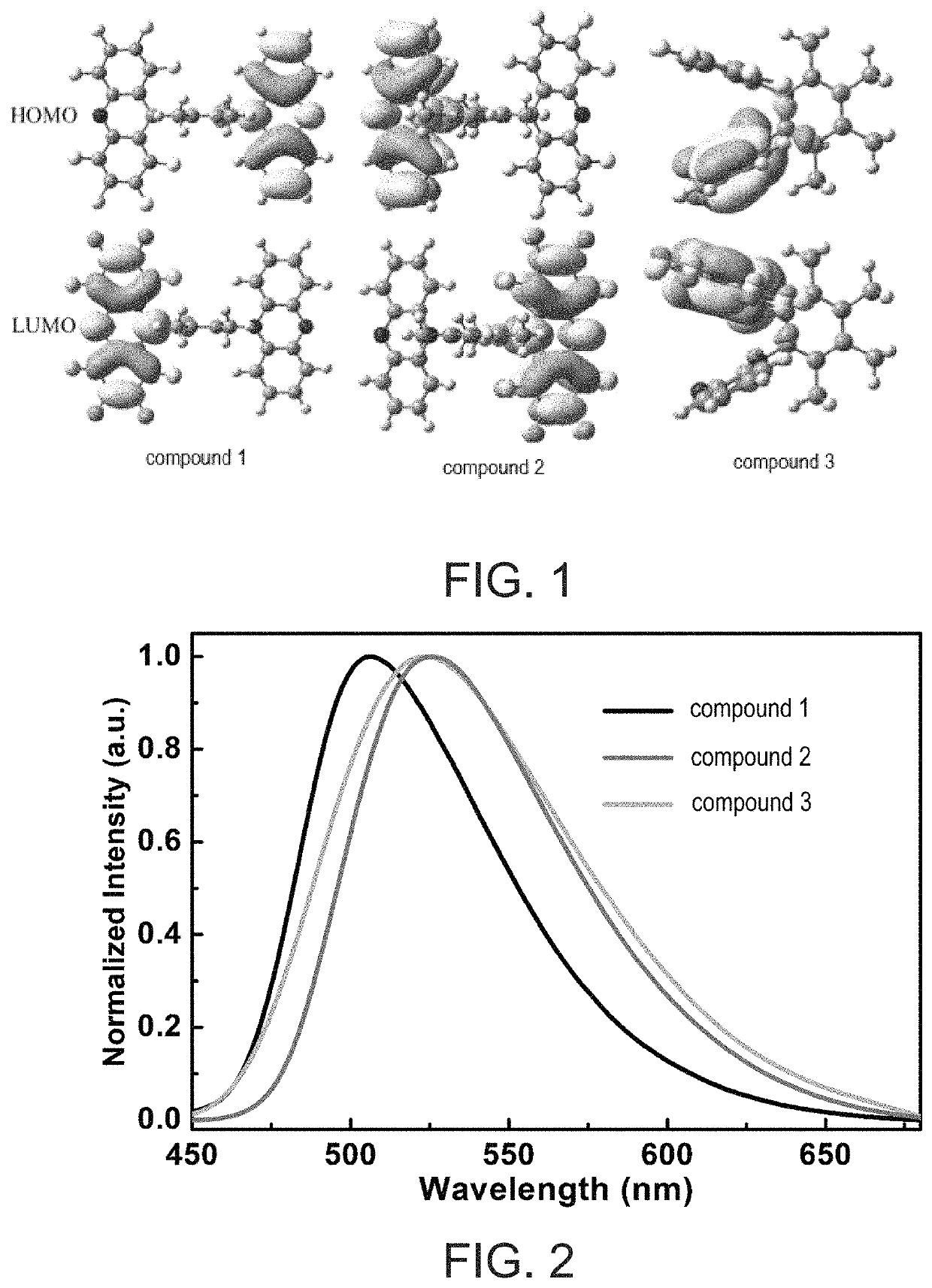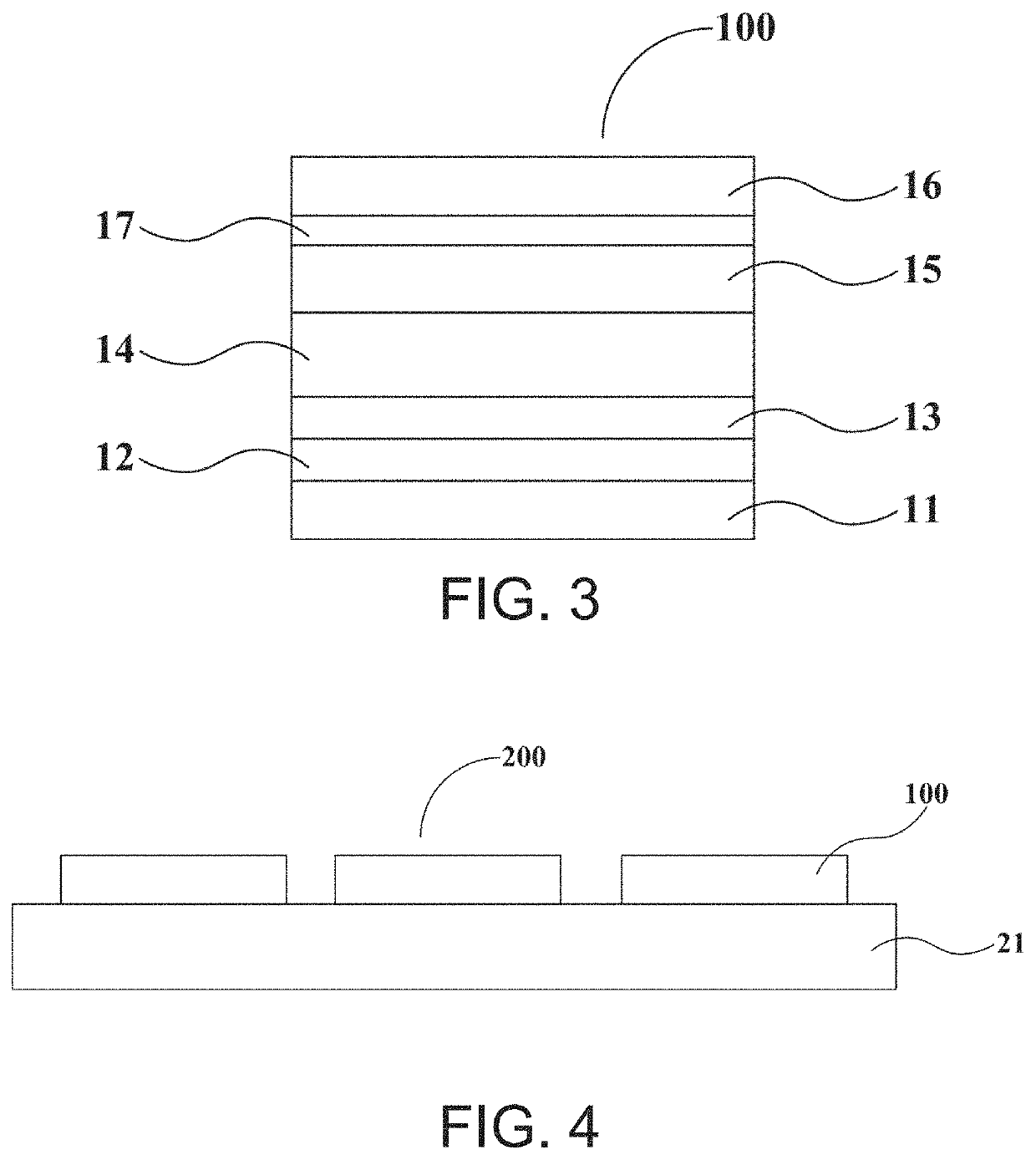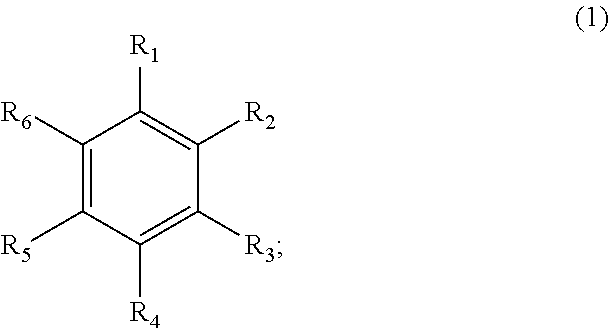Thermally activated delayed fluorescence material, organic electroluminescent device, and display panel
a technology of delayed fluorescence and organic electroluminescent devices, which is applied in the direction of organic chemistry, luminescent compositions, semiconductor devices, etc., can solve the problems of limited application of fluorescent electroluminescent devices, lack of green light-emitting materials, and inability to achieve maximum internal quantum efficiency (iqe) of fluorescence materials, etc., to achieve the effect of increasing the synthesis efficiency of green light-emitting tadf materials
- Summary
- Abstract
- Description
- Claims
- Application Information
AI Technical Summary
Benefits of technology
Problems solved by technology
Method used
Image
Examples
first embodiment
re of Compound Represented by Formula (1)
[0040]In the present embodiment, specific structure of compound represented by formula (1) is described by table (1). A thermally activated delayed fluorescence (TADF) material provided by the present invention includes a compound represented by the following structural formula (1):
[0041]
[0042]
Table 1numeralsstructural formula 1 2 3 4 5 6 7 8 910111213
wherein D is an electron donor group represented by the following formula (D-i), and A is an electron acceptor group represented by the following structural formula (A-i-52):
[0043]
and
wherein X is fluorine.
second embodiment
rocess of Compound 1
[0044]In the present embodiment, a TADF material is provided including compound 1 represented by the following structural formula (I-1):
[0045]
[0046]Synthesis of compound 1 is illustrated bellow:
[0047]
[0048]Specific synthesizing process is illustrated below:
[0049]step 1: Adding raw material 1 (2.67 g, 5 mmol), phenoxazine (1.1 g, 6 mmol), palladium acetate (45 mg, 0.2 mmol), and tri-tert-butylphosphine tetrafluoroborate (0.17 g, 0.6 mmol) into a two-neck bottle. Then, placing the two-neck bottle in a closed environment and adding NaOt-Bu (0.58 g, 6 mmol) into the two-neck bottle. Then, adding water- and oxygen-free toluene (40 ml) into the two-neck bottle in argon environment at 120 degrees Celsius for 24 hours to form a reacting solution.
step 2: adding the reacting solution into cold water after the reacting solution reaches to room temperature. Extracting organic phase from the reacting solution for three times by dichloromethane. Combining the organic phase ext...
third embodiment
Process of Compound 2
[0050]In the present embodiment, a TADF material is provided including compound 2 represented by the following structural formula (I-2):
[0051]
[0052]Synthesis of compound 2 is illustrated bellow:
[0053]
[0054]Specific synthesizing process is illustrated below:
[0055]step 1: Adding raw material 2 (2.67 g, 5 mmol), phenoxazine (1.1 g, 6 mmol), palladium acetate (45 mg, 0.2 mmol), and tri-tert-butylphosphine tetrafluoroborate (0.17 g, 0.6 mmol) into a 100 ml two-neck bottle. Then, placing the two-neck bottle in a closed environment and adding NaOt-Bu (0.58 g, 6 mmol) into the two-neck bottle. Then, adding water- and oxygen-free toluene (40 ml) into the two-neck bottle in argon environment at 120 degrees Celsius for 24 hours to form a reacting solution.
step 2: adding the reacting solution into cold water (200 ml) after the reacting solution reaches to room temperature. Extracting organic phase from the reacting solution for three times by dichloromethane. Combining the ...
PUM
| Property | Measurement | Unit |
|---|---|---|
| IQE | aaaaa | aaaaa |
| IQE | aaaaa | aaaaa |
| thermally activated delayed fluorescence | aaaaa | aaaaa |
Abstract
Description
Claims
Application Information
 Login to View More
Login to View More - R&D
- Intellectual Property
- Life Sciences
- Materials
- Tech Scout
- Unparalleled Data Quality
- Higher Quality Content
- 60% Fewer Hallucinations
Browse by: Latest US Patents, China's latest patents, Technical Efficacy Thesaurus, Application Domain, Technology Topic, Popular Technical Reports.
© 2025 PatSnap. All rights reserved.Legal|Privacy policy|Modern Slavery Act Transparency Statement|Sitemap|About US| Contact US: help@patsnap.com



